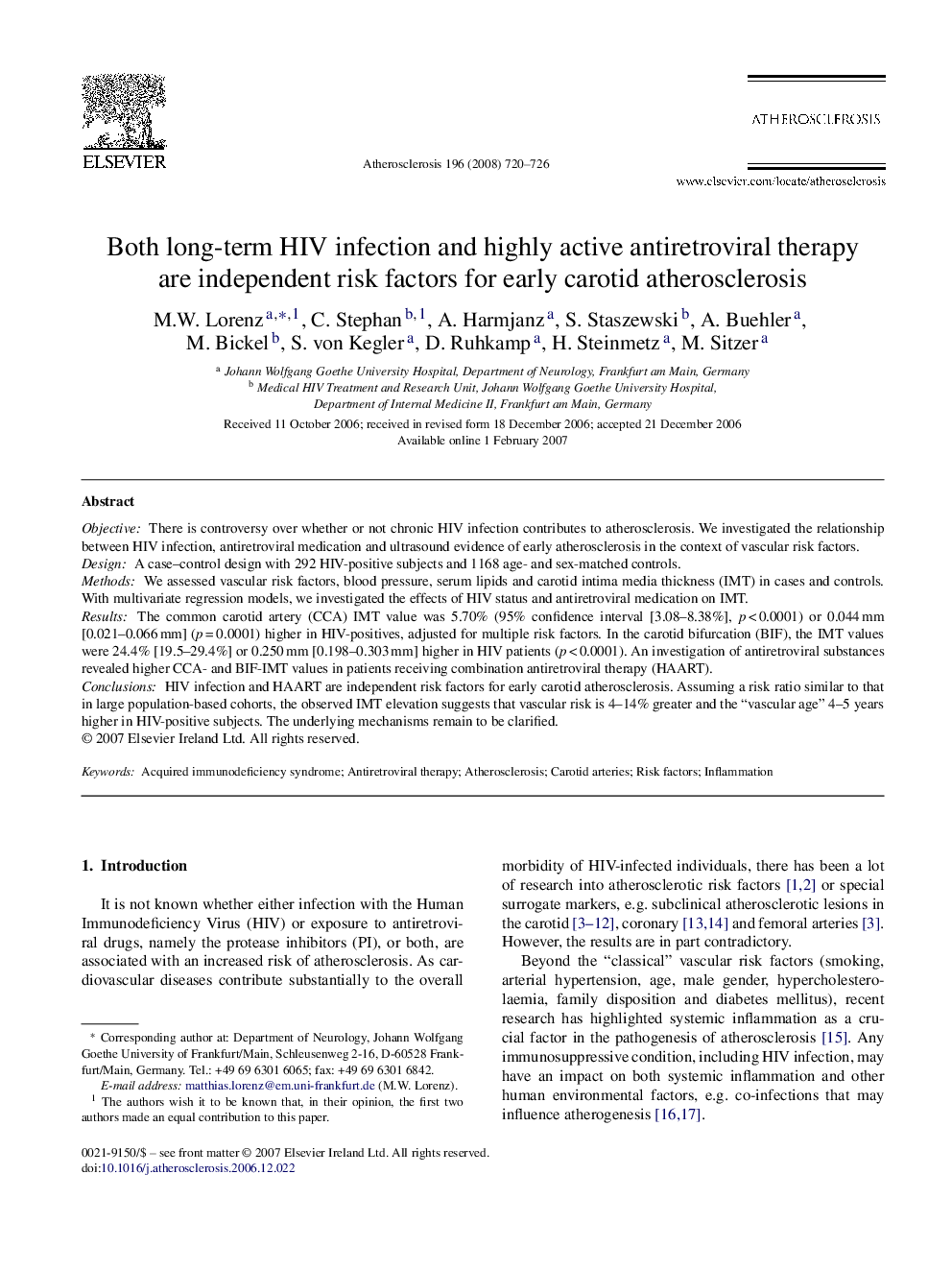| Article ID | Journal | Published Year | Pages | File Type |
|---|---|---|---|---|
| 2894041 | Atherosclerosis | 2008 | 7 Pages |
ObjectiveThere is controversy over whether or not chronic HIV infection contributes to atherosclerosis. We investigated the relationship between HIV infection, antiretroviral medication and ultrasound evidence of early atherosclerosis in the context of vascular risk factors.DesignA case–control design with 292 HIV-positive subjects and 1168 age- and sex-matched controls.MethodsWe assessed vascular risk factors, blood pressure, serum lipids and carotid intima media thickness (IMT) in cases and controls. With multivariate regression models, we investigated the effects of HIV status and antiretroviral medication on IMT.ResultsThe common carotid artery (CCA) IMT value was 5.70% (95% confidence interval [3.08–8.38%], p < 0.0001) or 0.044 mm [0.021–0.066 mm] (p = 0.0001) higher in HIV-positives, adjusted for multiple risk factors. In the carotid bifurcation (BIF), the IMT values were 24.4% [19.5–29.4%] or 0.250 mm [0.198–0.303 mm] higher in HIV patients (p < 0.0001). An investigation of antiretroviral substances revealed higher CCA- and BIF-IMT values in patients receiving combination antiretroviral therapy (HAART).ConclusionsHIV infection and HAART are independent risk factors for early carotid atherosclerosis. Assuming a risk ratio similar to that in large population-based cohorts, the observed IMT elevation suggests that vascular risk is 4–14% greater and the “vascular age” 4–5 years higher in HIV-positive subjects. The underlying mechanisms remain to be clarified.
